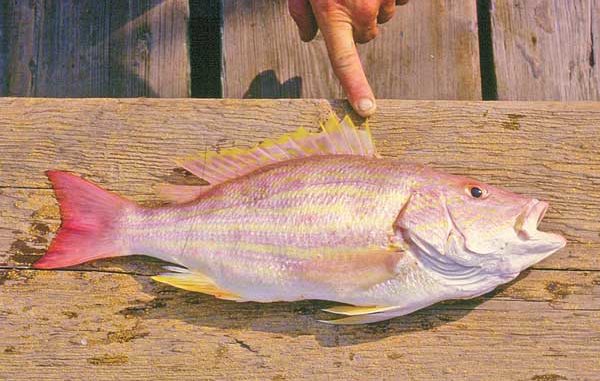
The Baton Rouge area offers plenty of public ponds that present anglers young and old the opportunity to fill their stringers.
What passes for another red snapper season is upon us again, and fishermen will be zeroing in on offshore oil and gas platforms to add their two red snapper to the rest of their reef-fish catch. Most anglers well know that some platforms hold more fish than others, but many do not fully grasp the fact that one side of a platform will very often hold many more fish than the other sides. It is just so easy to hook on to the downcurrent or downwind side of the rig, fish it and then move on to another one if the bite doesn’t come quick.
But that might not be smart fishing, according to research done by LSU Coastal Fisheries Institute biologists. The focus of the work was to determine whether fish habitually used one side of the platforms selected for study more than the other sides.
Rather than use nets or divers, which have problems with gear selectivity, visibility or diver avoidance, the researchers used sonar transmitters that were mounted on the platform to send their signals upward and downward around the edges of the platforms. The sonar signals were able to pick up fish 1.2 inches long and longer, count the fish and determine their sizes.
Sampling was done at three platforms over a several-year period: South Timbalier (ST) 54 in 72 feet of water, Grand Isle (GI) 94 in 195 feet of water and Green Canyon (GC) 18 in water 712 feet deep. The deepest platform was located off of the gently sloping bottom of the continental shelf, on the more steeply inclined continental slope.
At ST 54, the highest concentrations of fish by far were found on the north side of the platform. At GI 94, highest fish numbers were also on the north side, closely followed by the west side. At GC 18, far fewer fish were found than at the two shallower sites; however, most of the fish were found on the west side, with good numbers also occurring on the north side of the platform.
The high densities of fish on the north sides of platforms may be the result, it was speculated, of more structure being on that side of the platforms due to the location of the well bays.
Distribution by depth showed even more variation. At the shallowest platform, ST 54, fish concentrations were highest in the upper 16 feet of water. Fish numbers dropped until 32 feet deep, and then increased from there steadily to the bottom at 72 feet.
The species of fish present were identified using a small remote-controlled submarine carrying a video transmitter. The scientists noted that at times, fish identification was difficult because of the presence of a murky layer of water, most often in the bottom 15 to 30 feet of water.
At ST 54, the fish population was made up of the following species: spadefish (34 percent), blue runner (21 percent), sheepshead (17 percent), red snapper (11 percent), bluefish (2 percent) and 13 other species (15 percent).
GI 94, the mid-depth platform, held the most fish and had a distribution pattern similar to the shallow platform. Large concentrations of fish were found near the surface. By the depth of 15 to 16 feet, numbers dropped off by about half, and held steady until about 52 feet deep.
Then fish numbers increased rapidly to their highest numbers about 30 feet off the bottom. While dropping slightly from there to the bottom in 195 feet of water, fish concentrations were still quite high.
At GI 94, by far the most common fish species found during the study period was the blue runner (88 percent), followed by red snapper (3 percent), horse-eye jack (3 percent), mangrove snapper (1 percent), amberjack (1 percent), barracuda (1 percent) and 18 other species combined (3 percent).
The platform in the deepest water, GC 18, held the least fish. At this platform, the largest concentration of fish was at the surface. Fish density showed a spectacular drop down to a depth of about 50 feet.
From there, fish numbers were very low, but fairly consistent until 325 feet deep. Below this depth, down to the bottom at 712 feet, almost no fish were found. In fact fish numbers were actually lower than in the open waters away from the platform on the continental shelf.
The breakdown of fish species at GC 18 was as follows: creole fish (50 percent), blue runner (21 percent), Bermuda chub (6 percent), almaco jack (6 percent), amberjack (4 percent), horse-eye jack (4 percent), barracuda (2 percent) and 10 other species combined (7 percent).
The researchers concluded that the low fish densities at GC 18 were likely due to its location being distant from the highly productive waters discharged by the Mississippi River and that its waters were much like open ocean water with low productivity.
The researchers made one general observation that applied to all three platforms. Unlike on natural reefs, fish did not change depths with time of day. They also noted that at the deepest platform, fish numbers did not change with the time of year. At the two shallower platforms, fish densities were highest in fall and winter.
Jerald Horst is author of Trout Masters: How Louisiana’s Best Anglers Catch the Lunkers. For ordering information, visit www.lasmag.com or call (800) 538-4355.


